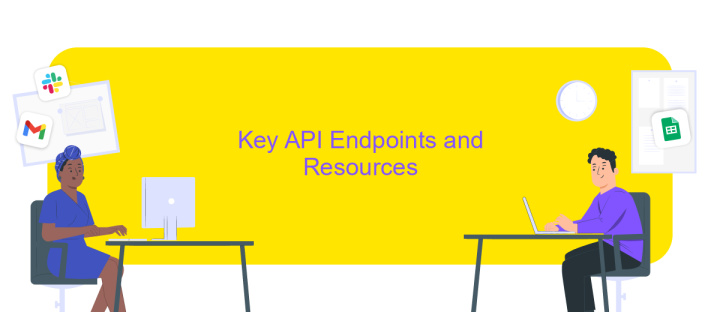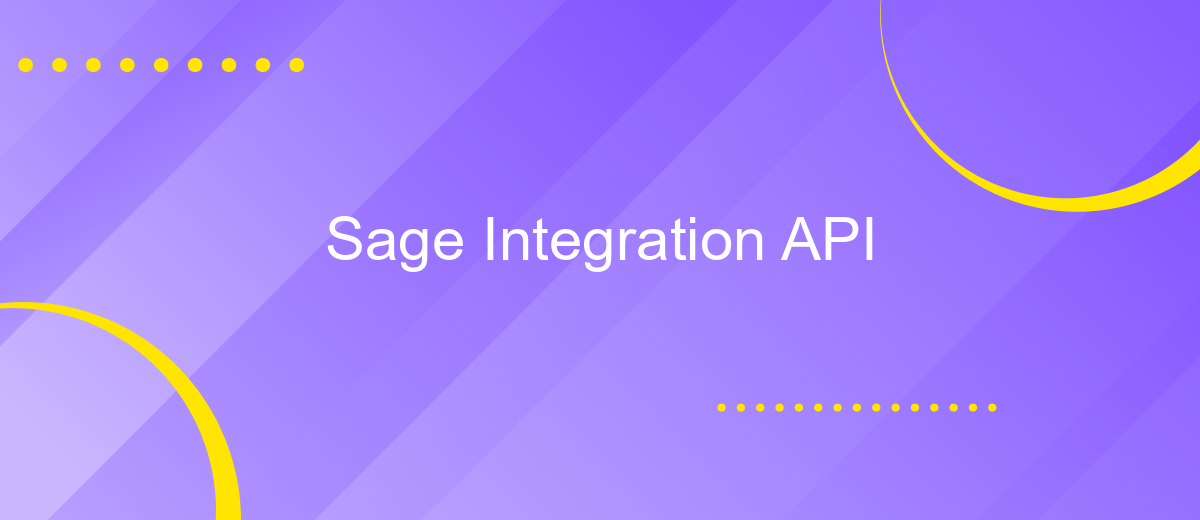Sage Integration API
The Sage Integration API provides businesses with a seamless way to connect their existing systems to Sage's powerful suite of financial and accounting tools. By leveraging this API, companies can automate workflows, enhance data accuracy, and improve overall operational efficiency. Whether you're looking to streamline invoicing, manage inventory, or generate detailed financial reports, the Sage Integration API offers a robust solution to meet your business needs.
Introduction to the Sage Integration API
The Sage Integration API is a powerful tool designed to streamline business operations by enabling seamless communication between various software applications and Sage's suite of products. This API provides developers with the flexibility to create custom integrations, allowing businesses to enhance their workflows, automate processes, and improve data accuracy. By leveraging the capabilities of the Sage Integration API, companies can achieve greater efficiency and scalability in their operations.
- Facilitates data synchronization across multiple platforms.
- Enables automation of routine tasks to save time and reduce errors.
- Supports customization to meet specific business needs.
- Enhances reporting and analytics by integrating diverse data sources.
- Improves collaboration by connecting different departments and systems.
Implementing the Sage Integration API can significantly benefit organizations by bridging gaps between disparate systems and ensuring a more cohesive digital ecosystem. Businesses can tailor their integrations to suit unique requirements, thereby optimizing performance and fostering innovation. With its robust features and user-friendly interface, the Sage Integration API is an essential component for businesses looking to modernize their operations and stay competitive in today's fast-paced market.
Authentication and Authorization

To ensure secure access to the Sage Integration API, it is essential to implement robust authentication and authorization mechanisms. Authentication verifies the identity of the user or application attempting to access the API, typically through API keys or OAuth tokens. These credentials must be securely stored and transmitted to prevent unauthorized access. Once authenticated, authorization determines the level of access granted to the user or application, ensuring that sensitive data and operations are protected according to predefined permissions and roles.
For seamless integration and management of authentication processes, leveraging third-party services like ApiX-Drive can be beneficial. ApiX-Drive provides tools to simplify the connection and automation of various applications, including managing API credentials and handling OAuth flows. By integrating ApiX-Drive, developers can streamline the authentication setup, reduce the complexity of managing multiple APIs, and enhance security through centralized control. This approach not only saves time but also ensures compliance with best practices in API security management.
Key API Endpoints and Resources

The Sage Integration API offers a comprehensive set of endpoints designed to facilitate seamless interaction with Sage's suite of applications. These endpoints enable developers to access, manage, and manipulate various resources, ensuring efficient integration with existing systems. Understanding the key API endpoints is crucial for leveraging Sage's capabilities to their fullest potential.
- Authentication Endpoint: This endpoint handles user authentication, providing secure access tokens required for API requests.
- Data Retrieval Endpoint: Allows users to fetch data from Sage applications, including customer details, invoices, and financial reports.
- Data Submission Endpoint: Enables the submission of data to Sage systems, such as creating new records or updating existing entries.
- Webhook Endpoint: Facilitates real-time notifications and updates by allowing external systems to receive event-driven data from Sage applications.
- Batch Processing Endpoint: Supports bulk operations, enabling efficient processing of large datasets in a single request.
These endpoints are designed to be robust and flexible, accommodating a wide range of integration scenarios. By utilizing these resources, developers can ensure that their applications communicate effectively with Sage systems, enhancing operational efficiency and data accuracy. Familiarity with these endpoints is essential for optimizing the use of the Sage Integration API.
Practical Examples and Use Cases

The Sage Integration API offers seamless connectivity between Sage software and other business applications, enhancing operational efficiency and data accuracy. By leveraging this API, businesses can automate routine tasks, reduce manual data entry, and ensure consistent data flow across systems.
For instance, companies can integrate their e-commerce platforms with Sage to automatically update inventory levels, process orders, and manage customer information in real-time. This integration not only saves time but also minimizes errors associated with manual data handling.
- Automated invoice generation by syncing CRM data with Sage accounting software.
- Real-time financial reporting by integrating Sage with business intelligence tools.
- Streamlined payroll processing through integration with HR software.
- Enhanced customer service by linking Sage with customer support systems.
These practical examples demonstrate how the Sage Integration API can be used to streamline business processes and improve overall productivity. By integrating Sage with various platforms, businesses can ensure that their operations are not only efficient but also scalable, adapting to the dynamic needs of the market.
Best Practices and Troubleshooting
When working with the Sage Integration API, it's crucial to adhere to best practices to ensure seamless integration and optimal performance. Begin by thoroughly reviewing the API documentation to understand its capabilities and limitations. This will help you design a robust integration strategy. Implement proper authentication and authorization mechanisms to safeguard data and maintain security standards. Regularly monitor API usage and performance metrics to identify potential bottlenecks or issues. Consider employing a service like ApiX-Drive to automate and streamline the integration process, reducing manual intervention and minimizing errors.
Troubleshooting common issues with the Sage Integration API involves a systematic approach. Start by checking for any error messages or logs that can provide insights into the problem. Ensure that all API endpoints and parameters are correctly configured and that the network connection is stable. If you encounter persistent issues, consult the Sage API support forums or documentation for guidance. Additionally, leveraging tools like ApiX-Drive can simplify the troubleshooting process by offering intuitive interfaces and real-time error notifications, helping you quickly identify and resolve integration challenges.
FAQ
What is Sage Integration API and how does it work?
How can I start using the Sage Integration API?
What are the common use cases for integrating with Sage using the API?
Are there any tools available to simplify the integration process with Sage?
What should I do if I encounter issues while using the Sage Integration API?
Strive to take your business to the next level, achieve your goals faster and more efficiently? Apix-Drive is your reliable assistant for these tasks. An online service and application connector will help you automate key business processes and get rid of the routine. You and your employees will free up time for important core tasks. Try Apix-Drive features for free to see the effectiveness of the online connector for yourself.

